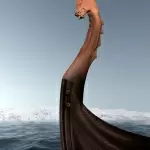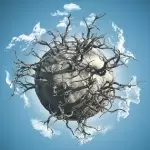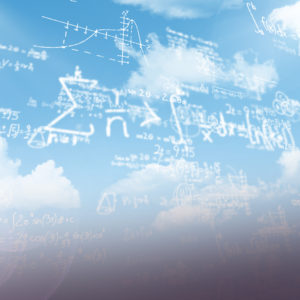
What is Mathematics?
Mathematics is described by various people as the only science that will ever prove anything, the only science capable of providing an absolute “yes” or “no” answer, and as the purest science. The word comes from the Greek translation of máthema which means " learning" or “study”. Without mathematics, there would be no applied or theoretical science. There would be no atmospheric sciences, nor would there be architecture, physics, chemistry, biology or anything else. That's because it is the examination and application of numbers including quantities, volumes, structures, and patterns and order. It uses concepts such as abstraction and logic, numbering and calculation, measurement of volume and distance, and the quantification of shape and motion (which includes speed) (1).
We know that humans have applied mathematics since the dawn of time, even if the people of the past did not understand that they were doing so - they did understand volume and distance, and why certain structures would survive better when built using certain exterior or exterior angles. As an applied science, it can take many years of trial and error to work out a mathematical solution - that is as true for building a mine as it is for calculating the distance between our planet and other planetary bodies, and for technology as it is for finance investment. It's also a natural science; many aspects of the universe adhere to universal laws of mathematics. Its status as the only pure science has led to its elevation as a universal language that transcends national boundaries and is expected to transcend civilization. Several mathematical principles were included on the Voyager space probes in a hope that alien civilizations would find them (2), see that we understand complex math, and understand that we have reached the civilization time scale.
Why is Mathematics Important to Science?
Mathematics is as much of a tool as it is a science in itself. It creates simple concepts around which other sciences are built and provides a quantitative framework for building hypotheses and theories (3), not always dealing in absolutes, but always reaffirming evidence. Many of our sciences would not exist were it not for the mathematical framework and especially without the areas of mathematics listed in a later section of this guide. Math is arguably the first science and grew up simultaneously in every civilized society since the dawn of time. Even those who practised it did not necessarily see it as a science as we would see it - but as a method of solving problems, facts about the world around them, using logic and trial error. Eventually, this would lead to the study of mathematics as a formal subject as it did in Ancient Egypt, but it predates even their society. More details are in the History of Mathematics section below.
Today, while some modern scientists don't particularly need more than a basic grasp of mathematics - high school level or slightly beyond, many could not conduct their work without it. Most do need to understand data science and any researcher in any field needs more than a passing understanding of statistics. Arguably, most people should know more about statistics than they actually do. But most need the thought processes of mathematics. That include statistics, but it also includes arithmetic that we all need - proportions, percentages, and calculating how much change to get from a $10 bill for an item that costs $6.49.
As far as the three major sciences go, math is fundamental:
- Chemistry: employ mathematics for algorithms such as calculate the structure of molecules and classifying them based on the number of protons, electrons, neutrons etc (4). The number of these particles can change the makeup and actions of a molecule; math is used to count and classify.
- Physics: Calculating the size of the Earth, the distance to the Moon, and plotting both the best routes and the best time to launch missions (5). You may have heard about “launch windows” for any space-bound mission. This is because the planets, satellites and other bodies are always moving. There are times when they come close together and the launch must be timed to minimize distance and margin of error. If the time slot passes by, it will take either a long time to reach or they may miss the phenomena completely.
- Biology: One area of biology that uses mathematics is population biology (6). This is the examination of species numbers, prevalence and distribution. Biology can deal with predictability in many ways - as we will see below, this applies particularly strongly with the environmental sciences too and especially where they overlap with biology.
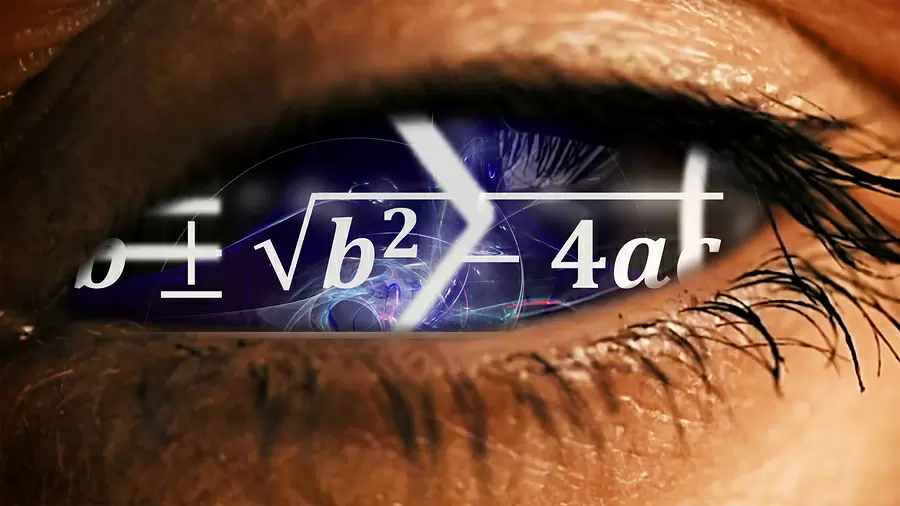
Mathematics and Environmental Science
The environmental sciences concern everything about the world around us, from the land on which we live to the subsurface rock, our waterways and soils, our built environment, and nature and conservation of plant and animal species. Many of the broad sciences that are classified as environmental sciences utilize math in one way or another.
Architecture: It may be argued that architecture is a form of applied mathematics (7). It has done so since the dawn of civilization. Working out ratios and proportions of buildings have allowed architects throughout time to build some impressive structures, not least of all the Giza Pyramids whose angle and bottom-heavy approach has stood the test of time. Architecture is all about angles.
Atmospheric Sciences: Climatology and the other atmospheric sciences such as meteorology is all about reading data and making predictions with simulated models (8). Both of these concepts require mathematics and climatology would not be able to make predictions without modelling. At best, they would be educated guesswork and highly inaccurate most of the time. That is as true for today's environment as it is for the paleoclimate. Atmospheric concentrations of greenhouse gases and their effects, local weather patterns, and precipitation levels all require mathematical data.
Ecology: Ecology is the science of balance and relationships between living things. That can be anything from the human digestive system and the flora and microbes that live within it, entire ecosystems and the predator-prey relationship and the interdependence between plant life and animals of that landscape. More recently, ecology has developed a subdiscipline called mathematical ecology that uses more quantitative data in its analyses (9).
Geography: Essentially, geography is a science concerned with space and area (10), distributions, and relationships. That means it uses mathematics in many ways - to measure the size or volume of land and bodies of water, the expansion and contraction of planetary features over time (such as glacial retreat or water levels during excess or low precipitation - i.e. flooding or drought). It's most prevalent in the subarea of geophysics which deals with measurements.
Zoology: The obvious area for zoology as an environmental science is in species monitoring and conservation. We know roughly the balance of predator to prey to maintain equilibrium. We also use mathematics to monitor populations and distribution. This data is used to classify conservation status of species: not evaluated, data deficient, least concern, near threatened, vulnerable, endangered, critically endangered, extinct in the wild, extinct. Each of these grades is based on numbers, distribution, and availability of habitat (11).
Environmental Engineering: Engineering and math go hand in hand thanks to the necessities of physics in building projects. Engineers need a solid foundation of advanced mathematics, just as architects do, regardless of the field of engineering in which they work. Which aspects of math they need to understand the most varies though. Mathematics and any innovation in technology require physics and engineering (12).
Geographic Data Sciences: Increasingly, many environmental sciences are turning to hard data and analytics. This can include statistical analysis (which is in itself a mathematical science) but as such information is required by multiple stakeholders, even non-scientists and members of the public, it is being combined with visual output. The most common example here is geographic information systems which analyze data sets and outputs maps for visual reference.
This is a small sample of the environmental sciences, but it demonstrates with broad and varied examples of just how important mathematics is to environmental science, just as it is to other sciences. That's not to say that all of the environmental sciences require a large degree of math, and even within disciplines that may vary. For example, archaeology and anthropology may require those who work on spatial analysis and modelling understand mathematics and data science for the purpose of time and distribution whereas those who examine artifacts.
The History of Mathematics
Pre-Civilization Mathematics
Mathematics is such a base concept, it was hard to do anything without its application. Even though prehistoric peoples didn't necessarily know they were doing mathematics, that doesn't mean they weren't applying it. A history of math begins with the history of several discoveries or inventions, namely numbering. We have the first physical evidence of the understanding of numbers dating to Swaziland in Africa from around 37,000 years ago. It was a baboon bone into which were carved 29 lines (13). That purpose this served is not clear, but it resembles many traditional calendar sticks of African bushmen. Perhaps understandably, it is generally believed that the idea of numbering came from necessity of hunter-gathering societies, particularly counting the number of seasons and ensuring there was enough food for the kinship group. Therefore, it's possible that it far predates this artefact. More controversial is the Ishango bone which contains sequences of prime numbers although the ongoing debate is split between this as a coincidence and this as a deliberate attempt to quantify a formal numbering system (14).
Similarly, the stone circles of Europe have all been pointed to by various experts concerning the invention of mathematics. No true universal reason has ever been fully accepted by archaeologists although many believe that there is a reference to the changing of the seasons for agricultural purposes and possibly alignment with certain stars. The mathematics angle has never fully been explained or agreed. But we do know that by the time of the first civilizations in Babylonia and Egypt, mathematics was firmly established. That is not a subject of disagreement unlike this prehistoric artefacts and monuments.
Math in the First Civilizations
While much of the last section is up for debate on whether mathematical abstractions or concepts were present merely beyond a vague understanding, the true beginning of theoretical and applied mathematics came in Mesopotamia. We know that the Cradle Of Civilization was responsible for the world's first cities. That meant surplus agriculture, complex social organizations and hierarchy, and the first true economic systems. Mathematical principles such as algebra, arithmetic and geometry were required for many areas of these new societies but particularly for the new complex buildings, taxation and finance, trade and barter (the concept of valuation), land division and management, and even the crafts such as metalwork and weaving and - of course - divisions of time into hours, days, and astronomical seasons. It's perhaps unsurprising that mathematics, regardless of when it was invented, became necessary as bureaucracy increased (15).
While it was highly likely that Mesopotamia had a concept of number, it seems that Egypt was first to develop numbers in written form, using symbols to denote certain numerical forms. Hieratic Script predates the ornate hieroglyphs of Egypt's later forms of writing. Undoubtedly, the Mesopotamian civilization influenced Egypt greatly as both used a sexagesimal numbering system - that is, base 60 rather than the base 10 system. We still use this system today but in geometry, time, and even co-ordinates on a map. But how this developed is intriguing and we still see it today in the Middle East and the Indian subcontinent. The right hand is used to demonstrate multiples of 5 in a base 10 system, the left hand is used - not to count fingers, but knuckles. The fingers of the human hand possess 12 (16). The suggestion for this development is that 60 is a diverse number; in fact, it is the lowest number that is divisible by 1, 2, 3, 4, 5 and 16 (15). Egypt is also famed for developing both arithmetic, algebra and geometry to complex levels - this we know due to an artifact called the Rhind Mathematical Papyrus - a document that makes direct reference to the mathematics of the Giza Pyramids (17).

Greece and Rome
It is to the Greek civilization that we turn to begin to see mathematics as an area of study in its own right. That began around 600BC and Greek culture revolutionized mathematics, making it more complex than ever before, perhaps setting it on the road to being a true science in the modern sense of the word. It was practiced at the Greek Academy throughout its approximately 1,100-year life. While pre-Greek math is known largely for “inductive reasoning” - essentially ongoing observations used to determine the facts, and the Greeks introduced “deductive reasoning” - essentially using logic to derive conclusions from a premise and using math to prove it (17). Ancient Greece was a golden age of early mathematics. Thales, for example, used the new mathematical science of geometry to calculate the dimensions of the Giza Pyramids. By this time, Egypt was under Greek rule - both people learned greatly from the advances of each other.
Greek specialists from the period include Pythagoras (responsible for the doctrine that “math rules the universe”) who was also, incidentally, a great astronomer, Euclid (responsible for mathematical rigor and axiomatic method from his book Elements), and Archimedes (responsible for the method of exhaustion and discovering the number “pi”). All these figures are familiar and, perhaps uniquely for ancient science, their discoveries and teachings still form the crux of the modern discipline today. Some argue that their works were inspired by the Egyptians and Babylonians, which is probably true, but their work in the field is not disputed. Also of note here are Diophantus, responsible for developments in algebra, and Pappus of Alexandria, responsible for the hexagon theorem and centroid theorem.
Most of Rome's mathematics simply adopted the Greek discoveries but their major shift came with the base 10 but did not introduce the (later controversial) concept of zero (18). The Romans did not invent it, but they did make it part of common usage and we have stuck with that usage ever since for everyday application. They also introduced the 12-month calendar from the earlier days of the Roman Kingdom which was modified during the Republic and then the Empire during which the Julian Calendar was introduced still used in Eastern Orthodox countries today but eventually supplanted in the west by today's Gregorian Calendar.
The Far East
Many of the sciences we take for granted today have ancient traditions. At about the same time the Roman Empire was conquering Western Europe and parts of the Middle East, Chinese thinkers were busy working away on other areas of basic mathematical principles. During the Han Dynasty, many concepts of math grew up independent of the discoveries present in the west that it's believed, at least in terms of mathematics, that there was no trade of knowledge. The best-known invention in China from this period is the odometer (19) - the first known device to measure distance. This invention is also credited with later clockwork. Shortly afterwards, the Romans invented it too and it's believed the two civilizations did this independently. Although we credit the Romans with the decimal system, the Chinese were using it from very early on. Most interesting and important is the concept of the decimal place. They used sticks number 1-9 to represent numbers in a base-10 system (20). It also seems the developed geometry independent of the Greeks (21). While Chinese civilization was early or contemporary with the Greeks and Romans on many mathematical aspects, with other areas of math they were quite late. For example, algebra did not develop in the Far East until the late 13th century.
There is a similar story in ancient India - geometry and shape are common across the Indus Valley civilization but only, it seems, as a religious or semi-mystical approach to the exterior architecture of temples and other complexes. This is a tradition that modern Hindus carry on today which honor the natural shapes of fractals (22). Indian civilization would continue to develop important mathematical concepts and theorems although how much these may have been influenced by contact with the Greeks and Romans. Inventions include trigonometry, mostly for the purpose of astronomical observation as was the case in most places around the world where mathematical concepts were invented, mathematical notation and the binary numerical system - used in computational mathematics today. By the time of the Islamic Conquest, much of the Indian subcontinent's discoveries were tied up in the works of the Islamic scholars which were influenced a great deal by the Romans and the Greeks.
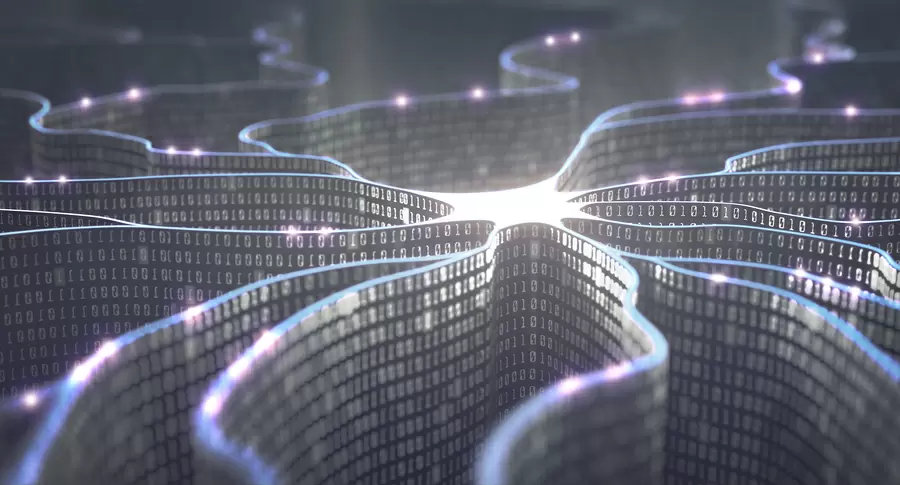
The New World
Some debate over the level of contact exists between China and India, but not as far as the New World is concerned. We do know that the Maya had a complex mathematical system which other contemporary, earlier and later civilizations in the Americas also used (Olmec, Aztecs) (23). They worked with a base 20 numbering system and a complex calendar by which the created great “ages” and cycles which were so terribly misinterpreted as forecasting the end of the world for 2012. It is understandable that they developed mathematics to such a high level. After all, the Maya were expert astronomers. They even - contrary to what the Old World civilizations were doing at the time - created the number “0” or at the very least, factored it into their mathematical system. This proved highly controversial in Christian Europe as is described in a later section. The Inca, much like the Mesopotamians in the Middle East, developed complex mathematics for the purpose of administration and bureaucracy. They were the largest Old World civilization (24) and used something called a “quipu”. Considered a counting device, it was a piece of string or rope with knots at various intervals and colors to denote numerical values.
Two Medieval Worlds, Two Different Approaches
The Islamic World: Most developments in mathematics came through the Islamic Golden Age but even then there was little to add during the period. What Islamic scholars essentially did was continue more ancient Greek and Roman traditions in all existing sciences at the time and also of Indian developments through the Arab and Persian worlds. They introduced the decimal numeral system through Persian Muḥammad ibn Mūsā al-Khwārizmī who wrote several important books on numerals and mathematics inspired directly by Indian works. It is also from his name that we get the word “algorithm” (25). Most of the work in algebra came during this period. In Egypt, Abu Kamil developed irrational numbers and square roots, hugely influential through to the modern day. The Islamic World was obsessed with Euclid, solving some of his equations, finding flaws, and developing solutions to some of his most complex issues. Little work had been done until this time and it's thanks to these North African and Middle Eastern scholars that the ancient Greek and Roman mathematicians are still celebrated today.
The Christian World: Developments in mathematics focused on looking for evidence of the natural order of things and, by definition, God's fingerprints. The reason is that The Book of Wisdom defines the world as being ordered in “measure, number, and weight” (26). One of the earliest Christian mathematicians was Boethius who lived in the 6th century. He defined the “quadrivium” of mathematical subjects as arithmetic, astronomy, geometry, and music. Two of these not subjects of modern math (astronomy and music) although both rely on mathematical principles quite heavily. Unlike many other areas, Christian Europe was only too happy to adopt Islamic thinking and concepts in the pursuit of mathematics and much work in Spain sought to harness the knowledge of the Moors both before and after their expelling from Iberia. Not that the medieval period was devoid of mathematical progress. The 14th century
Math in the Renaissance
Mathematics of the Renaissance is largely concerned with the expansion of bureaucracy and taxation, and the advent of accounting due to the new areas and methods of business that grew up in this time. This was the age of the first true modern banks and the calculation of interest and dividends. For that, we required complex algebra and arithmetic. But mathematics as a scientific principle also developed in this time thanks to an invention that came around the beginning of the period - the printing press (27). All of a sudden, publishing books was faster and easier than ever before, allowing the dissemination of printed material and some great works on mathematics were published in the few hundred years that followed.
- Summa de Arithmetica, Geometria, Proportioni et Proportionalita by Luca Pacioli, a 27 detailed work on bookkeeping. His most popular work was Particularis de Computis et Scripturis, a reference book for merchants but also contained possibly the world's first mathematical puzzles
- A prolific and diverse writer was Piero della Francesca who wrote about geometry, mathematics and perspective in painting (because mathematical proportion has always been important in the arts)
- Pacioli also wrote Summa Arithmetica, Pacioli in which were the first uses of representative symbols for plus and minus. We still use these same symbols today, but they were born during the Italian Renaissance. This was also the first book to contain algebra published in Italy although it was later discovered that Pacioli plagiarized Piero Della Francesca
Also, in the early Renaissance period, Scipione del Ferro and Niccolò Fontana Tartaglia together discovered cubic equation solutions. This was also the great age of the “artist-designer” a precursor to the scientific engineering. The likes of Leonardo Da Vinci designed some fantastical machines (28) including the parachute and a flying machine although science would later modify these early concept designs, it shows how mathematics and engineering were becoming fundamental sciences.
This is also the age of trigonometry with practical applications in navigation and the age of sail (29). Trigonometry is the science of measuring relationships, angles, distances, elevation, and bearing. The word and the concept arrived around this time.
During the Enlightenment and Scientific Revolution
The importance of mathematics only increased during the scientific revolution and new applications were being found all the time. In astronomy, although the link was always there, figures such as Tycho Brahe, Johannes Kepl3r and Galilei Galileo made some great discoveries thanks to the telescopes and were able to use math to calculate distances and relationships between heavenly bodies. Much of their conclusions about astronomy during the Enlightenment was based on complex mathematical measurements, particularly the work of Kepler who used a solid foundation of mathematics to define laws of planetary motion (30), and Renee Descartes developed analytical geometry to plot those motions in graphs. Engineering aside, there are few areas of science that have received quite so much development than astronomy and astrophysics. Isaac Newton would later develop the world of both men and create the first laws of physics (31).
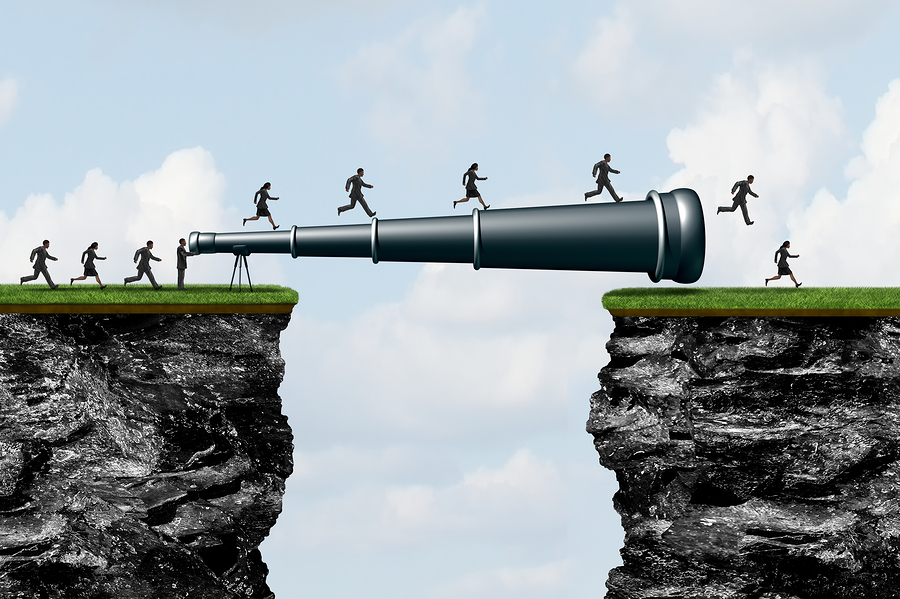
But there were other areas for applied mathematics too. Pierre de Fermat and Blaise Pascal set wheels in motion for the creation of probability theory and rules of combinatorics. The story goes that while gambling, Pascal wagered a life devoted to the pursuit of religion and spirituality. He posited that even though the odds were small, the rewards were infinite. This thinking would eventually lead to utility theory which would come later in the Enlightenment, and largely the work of philosophers Jeremy Bentham and John Stuart Mill although they did not develop it until the modern age (32).
The 18th century was dominated by the works of Leonhard Euler (33). He was responsible for developing mathematics in many ways, not least of all the development of graph theory and solving what were (until then) seemingly unsolvable mathematical conundrums such as the square root of minus 1, and the first use of the Greek letter that now represents the number pi (3.141592654…), topology, calculus and complex analysis - all of which have real-world applications too. He is most famous for The Seven Bridges of Königsberg problem. The last great names of the Enlightenment before reaching the modern age include Joseph Louis Lagrange. His work in algebra, mathematical theory, calculus (differential calculus and variations) and Laplace who was famous for statistics and celestial mechanics.
Mathematics in The Modern Age
The modern age, roughly beginning with the Industrial Revolution in the early 19th century, is one of development of mathematics as a practical application in the new developments of the science of engineering. Great new machines, building materials and processes simply built on what went before although the advent of the combustion engine is one of the greatest inventions of its age. But the 19th century is also one in which mathematics becomes more abstract too. One example of this trend is Carl Friedrich Gauss. His work on functions of complex variables for geometry, fundamental theorem of algebra, and the quadratic reciprocity law was far less practical for the every day, but put mathematics on the road to becoming an area of pursuit in itself rather than a means to an end. Most important, he claimed to have developed non-Euclidian geometry although he never published the work and the development was credited to rivals Nikolai Ivanovich Lobachevsky and János Bolyai. This principle challenges the Euclidian assumption that straight and parallel lines will never meet. Yet this is not true, especially when dealing with spherical objects (34).
The next important development is abstract algebra.
- In Germany, mathematician Hermann Grassmann defined vector spaces and linear algebra (35)
- Irish mathematician William Rowan Hamilton developed something called noncommutative algebra which studies properties of non-commutative bodies
- British mathematician George Boole devised Boolean algebra which uses the binary counting system of 0s and 1s, highly important today for computing
- The reformulation of calculus by Augustin-Louis Cauchy, Bernhard Riemann, and Karl Weierstrass
By the turn of the 20th century, mathematics had become a viable academic and industrial career choice. Its applications in engineering, physics, chemistry and biology made it a useful subject to study and teach while the new technologies of the Industrial Revolution and urbanization meant math graduates all over the world had options to work in a variety of areas. The 20th century would see two major disruptions. The first was the career of Albert Einstein who revolutionized many mathematical equations to solve some of the largest outstanding problems in physics. Differential geometry, for example, is at the core of his General Theory of Relativity (35). The second is computing which developed during the Second World War and now permeates our lives so heavily that we cannot imagine living without information technology (36). We now live in the Computing Age and much of the technology would not have been possible with programming and coding necessary to develop the theory behind computing - everything from the first calculators to Cloud Computing and Big Data.
Controversy and Confusion over the Number “0”
The big debate over “0” today is whether it is an actual number or simply a concept. But go back a few hundred years and it is far more controversial than some internal disagreement between mathematical scientists. The very idea of zero did not exist in the western world until around the year 1,200 (37). Although many societies in both the Old World (Maya) and New World (Babylonia and later the Arabs) had it, many considered it merely a “placeholder” rather than a workable number - a way to represent the absence of something. There is some debate amongst European historians on the use of zero mostly because the major ancient powers of the Greeks and the Romans did not use it - this is most prevalent in the Roman numeral system which never had a representation of zero. We know the concept came into the west from the Arab world which was - eventually - hugely influential on the Renaissance and later Enlightenment mathematics.
We know there was some resistance amongst the conservative elements in Catholic Europe in this time to the inclusion of zero within mathematics. Recent claims that they feared the idea of nothingness as a precursor to the non-existence of God are not supported by evidence while others have claimed their opposition was simply the fear of concepts from Islamic thinking and culture. Evidence for the former is lacking, though often repeated, while we do know that the city of Florence banned the use of Arabic numerals - it was out of belief of the possibility of fraud in their new market system (38) rather than religiously-motivated. It is likely that opposition was simply the emotional one of opposing to something new or, as is the case with Florence, concerns over enabling fraud. The simplicity with which a number can be changed to something far less or far greater with the addition of one or more zeroes fueled this problem.
Ultimately, zero was going to make its way into common use. When it did, it allowed for the highly important developments in calculus (39). With the adoption of zero, we could calculate distance and speed and without that, we would not have had many aspects of physics or even engineering. “0” may have been a source of controversy or confusion, but without it, many of our scientific advances and discoveries would not have been possible.

What are the Areas of Mathematics?
Algebra
Algebra is one of the most important areas of mathematics and one usually taught in its most basic form, to elementary school children. Despite this, it can get complex. It deals with properties and their operations, and also their structures to solve often quite simple problems. Many people use it as a way of solving simple or slightly more complex arithmetic, although that only becomes algebra with the introduction of “variables” - usually represented by letters or other symbols that do not have set, defined values. They vary because they may depend on the variable nature of other items in the equation. It's divided into many subareas with elementary algebra being the most commonly used in everyday use. As discussed above, it is named after the Persian thinker who came up with several concepts around the idea (40).
Arithmetic
To many people, arithmetic is the ability to - as most people would call it - do sums in one's head without needing paper and pen, calculator or any other device to work it out. But it's actually much simpler than that. Arithmetic concerns numbers, their values and relationships, and operations - addition, subtraction, multiplication and division. It is one of the basics of number theory, dealing with decimals, and forms the basis of any economy, budgeting, bookkeeping (even household finance). Arguably, it is the one area of math that we all need every minute, every day of our lives to work out times, measurements, distances and so on.
Calculus
It is another area of math that many people believe is more complicated than it actually is. It's the study of change including distance and time. It differs from arithmetic specified above in that it examines the changes rather than looking for an answer based on the integers, by breaking things down into infinitesimals (41). There are two branches of calculus: differential calculus which is the study of instantaneous rates such as curves and slopes, and integral calculus, which studies quantities and accumulations and the areas around and underneath curves. Although proto-calculus may have existed before, it is believed that both Isaac Newton and Gottfried Wilhelm Leibniz invented it. It has many uses including and especially in science, design, engineering, and in economics.
Combinatorics
Lesser known to many outside of mathematics and science, combinatorics is the science of things with finite combinations or structures. For example, it looks to solving simply questions with difficult answers such as the number of possible combinations for giving cash change from all available coins when presented with a $1 bill or working out the total possible number of Sudoku puzzles that we can devise (42). There is no set standard definition, but it is largely described as the being concerned with the enumeration theory, and with combinations and permutations, existing in a finite set of possible answers to a puzzle. This typically includes graph theory, amongst other things.
Computational Mathematics
For reasons that are understandable, this is a relatively new part of mathematics although it did exist before the age of information technology. How we use the term varies depending on whichever aspect of the relationship between computing and mathematics is under discussion. It could refer to applied mathematics and the use of math principles in driving computing or it may refer to the use of computing power to solve or drive complex mathematical equations. Applied computational mathematics can be used in any area of science and has particular uses in data modeling and analysis in such things as atmospheric carbon measurement over time or geographical area.
Foundational Mathematics
Many areas of science had a “foundational” aspect, that is, the study of the core principles. Mathematics is no different (43). The field is dedicated to examining the algorithmic, logical, and the philosophical basis of math. It is simply going back to the core of a subject and in this instance, means the study of the mathematics' most basic concept: numbering, sets, functions, geometrical figures, and the framework of the language of math. It has undergone several fundamental shifts with each now problem and addition of theories to solve them, most notably in Euclid's era, Newton's, and then Einstein's.
Geometry
The study of the shapes of objects - lines, points, circles, angles, circumference and volumes in both two and three-dimensional. This means it is integral to a number of areas including (and especially) cartography, route planning and navigation, civil engineering particularly in the built environment, computer-aided design, MRI and other medical imaging and many other areas (44).
Topology
This is the subarea of geometry within mathematics concerned with the properties of space when subject to pressure and deformations such as crumpling, bending, stretching, compression, and tearing. It is particularly useful for landscape analysis in geology.
Mechanics
Mechanics examines, through mathematics, behavior of physical bodies under certain pressures, forces, and displacements (45). It also examines the permanent effects of the changes to those bodies and the environment changes. It began with Aristotle and Archimedes and developed greatly in the Renaissance and pre-enlightenment era. Kepler, Newton and Galileo are largely credited with its application in physics and why the two disciplines are so intertwined today, but that is not the limits of its influence. More recently, it has moved to incorporate motion and force on objects.
Operation Research
Related to analysis, this is the application of advanced methods in decision-making using a wide range of techniques (46). It is a method of applied math, using many principles and ideas to solve real-world problems. It sometimes goes by the name of “management science” or “decision science” and uses computational science, modelling, statistical analysis, especially using powerful technologies. It has uses in complex engineering, environmental science, industry, operations management, and can use both quantitative and qualitative data depending on the area of application. It was once the exclusive preserve of applying statistics and seeking efficiency and proficiency of military applications during World War II but has grown, along with computing power, and outstripped that.
Probability
Devised by Blaise Pascal, probability is the mathematics of likelihood of an outcome (47). Although largely perceived as an issue with gambling, it also has applications in risk management for investment and business, insurance premium calculation and a variety of other financial services such as the stock market. But probability also has some higher uses. Often expressed as a percentage (with 0% being impossible and 100% being certain), this is not always the case. In mathematical probability, many calculations are expressed in a range of 0-1 instead.
Statistics
Statistics is about the collection and processing, and the interpretation and presentation of hard data. It is fundamental to any scientific research such as measuring demographics, population change, health issues and resource allocation, percentage changes. Today it includes the methods of data collection as well as the process of collection in order to get a proper and fully accurate sample size. For example, standing outside a church on a Sunday and asking people who come out about their church attendance and whether they are a Christian might lead us to a conclusion that 100% of the population goes to church and 100% go to church every Sunday. Therefore, statistics is as much a philosophy about the collection of data as a tool of collection (48).
The Future of Mathematics
Remaining Visible
It has been a matter of some critique from all quarters that government science and technology budgets have focused on those aspects with a high chance of return on investment. Because mathematics has little to no quantifiable ROI, budgets into research and applications here are at the mercy of engineering and science projects that might better warrant it. Part of the problem, according Congressman George E. Brown Jr speaking in 1997, is that the ways in which mathematics underpins science is poorly understood in government who tend to enjoy the benefits of engineering and math investment while continually failing to realize why math is important (49). The overwhelming majority of our discoveries in science have been due to breakthroughs in math.
Keeping Math Exciting
There has been a considerable drop in the number of students taking hard sciences, particularly mathematics. Many teachers and teaching decision-makers in the western world are noticing the trend and feel that the way math is taught needs to be updated and made relevant to a modern student base. Maybe the problem is too much theory; maybe the issue is that the way it is taught does not contain enough practical applications and the types of problem solving exercises relevant to the 21st century (50). Also that there is not enough focus on the reason and critical thinking in math that people need in their everyday lives, rooted in archaic thinking and practices while the rest of the world has moved on (51).

Falling Standards and Myths About Math
Despite having a much smaller education budget, China has some of the best math standards in the world. There is a similar attitude in Japan. Both countries believe that even the least academically gifted student can be taught advanced mathematics, probability, analysis and critical thinking and they are taught so from an early age. This is a stark contrast to the US, Canada, and European countries where it is believed that math is difficult and only for exceptional students (52). If western nations are to succeed and increase math standards in this century, it may take a revolution at education board level, but also greater encouragement to dispel myths that students have about mathematics.
Solving Equations
The history of modern mathematics is full of complex equations and conundrums that have eventually been solved. Today, there are as many as several hundred unsolved mathematical problems and just six of the Millennium Math Problems now remain to be solved (53). Anybody who can solve them will win a $1m prize. The fact that there are so many and we keep making headway on solving them shows there is the desire to solve them at all, despite the lowering interest in the field by students. Some of these problems could be the key to unlocking some complex new advances in technology.
Sources
- https://www.livescience.com/38936-mathematics.html
- https://www.space.com/38024-math-of-voyager-golden-record.html
- https://www.sciencedaily.com/releases/2008/06/080605181158.htm
- https://www.omicsonline.org/the-importance-of-mathematics-to-biology-2157-7625.1000e112.pdf
- https://link.springer.com/article/10.1007/s00004-999-0008-6
- https://www.springer.com/gb/book/9783642644726
- http://www.iucnredlist.org/
- https://www.jstor.org/stable/27953671
- http://www.historyofinformation.com/expanded.php?id=2338
- https://www.maa.org/press/periodicals/convergence/mathematical-treasure-ishango-bone
- https://www.storyofmathematics.com/sumerian.html
- https://books.google.co.uk/books?id=xlzCWmXguwsC&pg=PA92&lpg=PA92&redir_esc=y#v=onepage&q&f=false
- https://explorable.com/thales
- http://www.storyofmathematics.com/roman.html
- http://en.cnki.com.cn/Article_en/CJFDTOTAL-QHXB195702005.htm
- http://www.storyofmathematics.com/chinese.html
- https://link.springer.com/referenceworkentry/10.1007%2F978-1-4020-4425-0_8613
- https://link.springer.com/article/10.1007/BF02153753
- https://www.storyofmathematics.com/mayan.html
- http://www-history.mcs.st-and.ac.uk/HistTopics/Inca_mathematics.html
- https://www.etymonline.com/word/algorithm
- https://www.biblegateway.com/verse/en/Wisdom%2011%3A20
- https://voxeu.org/article/information-technology-and-economic-change-impact-printing-press
- http://www.vam.ac.uk/content/articles/l/leonardo-da-vinci-experience-experiment-design/
- https://www.wiley.com/legacy/Australia/Landing_Pages/c13ApplicationOfGeometryAndTrigonometry_web.pdf
- http://hyperphysics.phy-astr.gsu.edu/hbase/kepler.html
- http://zebu.uoregon.edu/disted/ph121/l3.html
- https://www.jstor.org/stable/1828885
- https://www.storyofmathematics.com/18th_euler.html
- http://mathworld.wolfram.com/Non-EuclideanGeometry.html
- https://plus.maths.org/content/what-general-relativity
- https://www.scientificamerican.com/article/history-of-zero/
- https://www.newscientist.com/article/mg21228390-500-nothingness-zero-the-number-they-tried-to-ban/
- https://yaleglobal.yale.edu/history-zero
- https://www.livescience.com/50258-algebra.html
- https://www.livescience.com/50777-calculus.html
- https://blog.oup.com/2016/06/what-is-combinatorics-vsi/
- https://www.britannica.com/science/foundations-of-mathematics
- http://www.teach-nology.com/teachers/subject_matter/math/geometry/
- https://books.google.co.uk/books?id=vPT-JubW-7QC&pg=PA19&dq=&hl=en&redir_esc=y#v=onepage&q=&f=false
- http://www.hsor.org/what_is_or.cfm
- https://www.mathsisfun.com/data/probability.html
- https://plato.stanford.edu/entries/statistics/
- http://www.ams.org/notices/199705/comm-brown.pdf
- https://theconversation.com/how-math-education-can-catch-up-to-the-21st-century-77129
- http://www.prenhall.com/divisions/ect/app/martinez/pages/Chapter%201.pdf
- https://www.npr.org/templates/story/story.php?storyId=125658261
- Guide to Parasitology - November 19, 2018
- Deserts as Ecosystems and Why They Need Protecting - November 19, 2018
- Conservation: History and Future - September 14, 2018
Related Articles
Featured Article

Birds as Environmental Indicators



